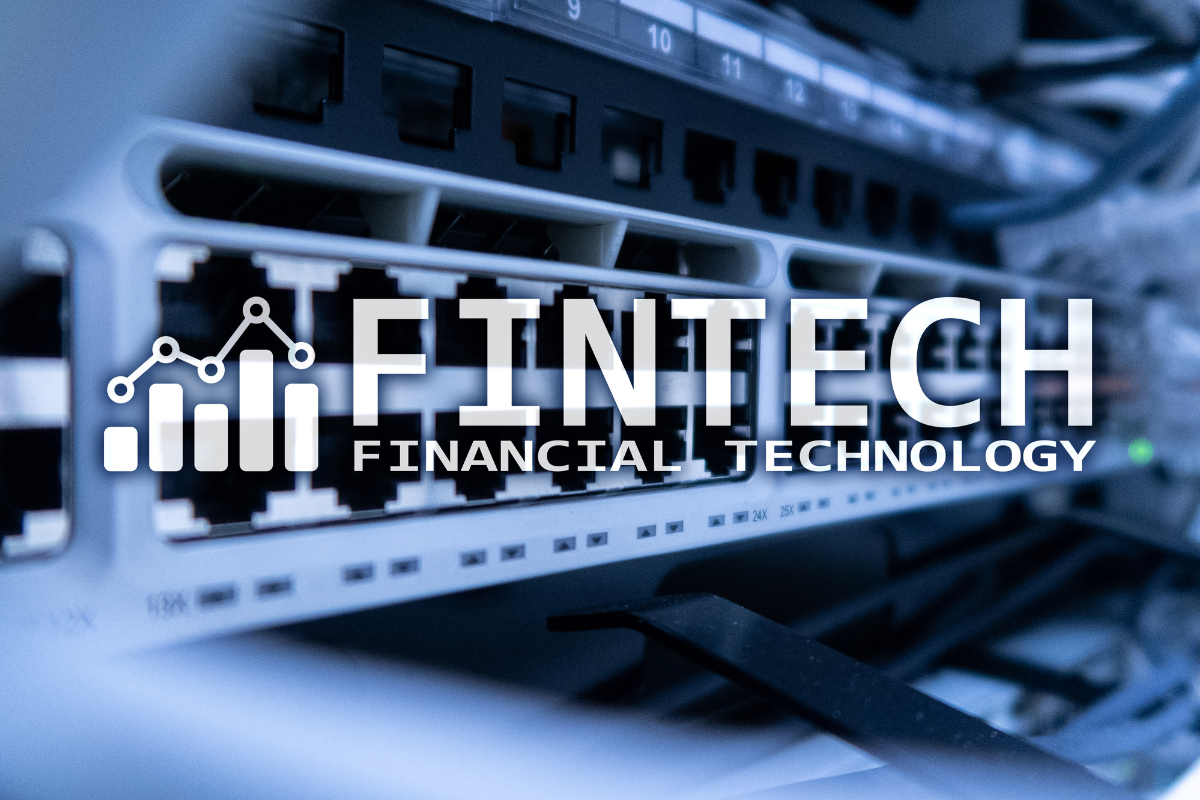Fintech, an amalgamation of “financial” and “technology,” represents the innovative use of technology in delivering financial services.
It encompasses a broad spectrum of products, technologies, and business models that aim to streamline and enhance various aspects of finance, banking, investing, and payments.
Fintech solutions leverage cutting-edge advancements like AI, blockchain, and data analytics to revolutionize traditional financial processes, offering efficiency, accessibility, and convenience to both businesses and consumers.
Importance of Fintech In Modern Financial Systems
Fintech’s significance in modern financial systems cannot be overstated. Fintech software development services enable companies to addresses critical pain points in traditional finance by offering accessible, cost-effective, and user-friendly financial services.
By leveraging technology, Fintech enhances financial inclusion by reaching underserved populations, facilitating seamless cross-border transactions, and providing personalized financial solutions.
Moreover, Fintech drives efficiency and innovation, pushing established institutions to adapt and evolve.
It fosters a culture of innovation, encouraging the development of new business models and financial products that cater to evolving consumer needs.
Additionally, Fintech is pivotal in optimizing processes, reducing operational costs, and enhancing security measures, ultimately contributing to a more resilient and efficient financial ecosystem.

FinTech Development
Fintech software development involves a meticulous process of integrating technology into financial services.
To ensure its efficacy and competitiveness, several key elements are fundamental in crafting robust Fintech software solutions:
1. Security Features
Security stands as the linchpin of Fintech software. With financial data at stake, robust security measures are non-negotiable.
Fintech applications employ multi-layered security protocols, including encryption, two-factor authentication, and biometric authentication, safeguarding sensitive user information from unauthorized access and cyber threats.
Compliance with stringent regulatory standards is imperative, ensuring data privacy and maintaining user trust.
2. Scalability And Flexibility
Fintech software must possess the ability to scale seamlessly to accommodate growing user bases and increasing transaction volumes.
Scalability ensures that the software remains efficient and responsive, despite rapid expansion.
Additionally, flexibility in architecture and design allows for easy adaptation to evolving market needs and technological advancements, ensuring the software remains agile and competitive.
3. Integration Capabilities
Interoperability lies at the heart of Fintech software. Integrating seamlessly with various systems, APIs, and third-party services enhances functionality and widens the scope of services offered.
Open APIs facilitate collaboration between different financial institutions and third-party developers, creating comprehensive financial ecosystems and enabling innovation in product offerings.
4. User Experience (UX) and User Interface (UI) Design
The success of Fintech software hinges on its usability and intuitive design. A well-crafted user interface (UI) coupled with a seamless user experience (UX) fosters user engagement and retention.
Intuitive navigation, clear information presentation, and personalized experiences enhance user satisfaction, encouraging continued usage and loyalty.
A user-centric design approach ensures that the software addresses user needs efficiently and effectively.
Steps In Fintech Software Development
Research and Analysis Phase
Before initiating Fintech software development, a thorough understanding of market demands is crucial.

This involves conducting in-depth market research to identify gaps, pain points, and unmet needs within the financial sector.
Analyzing consumer behavior, preferences, and emerging trends helps in conceptualizing solutions that address specific market demands.
A comprehensive analysis of existing Fintech solutions and competitors is imperative.
Studying competitor offerings provides insights into successful strategies, potential pitfalls, and areas for differentiation.
Understanding competitor strengths and weaknesses guides the formulation of unique value propositions and competitive advantages for the new software solution.
Planning and Design
Clear definition of the project scope sets the boundaries and objectives for the development process.
This includes outlining features, functionalities, and technical requirements based on the identified market needs.
A well-defined scope ensures alignment with business goals, minimizes scope creep, and aids in resource allocation and time management.
The planning stage involves creating wireframes and prototypes that visualize the software’s architecture, layout, and user flow.
This step allows stakeholders to visualize the end product, gather feedback, and make necessary adjustments early in the development cycle.
Prototyping helps refine the user experience (UX) and ensures that the final product meets user expectations.
Development Phase
Choosing the appropriate technology stack is critical for the success of a Fintech software project.
Factors like security, scalability, and compatibility dictate the selection of programming languages, frameworks, databases, and other technical components.
Embracing cutting-edge technologies ensures the software remains competitive and capable of meeting evolving industry standards.
Adopting Agile methodologies, such as Scrum or Kanban, facilitates iterative and incremental development.
This approach allows for flexibility, transparency, and continuous collaboration between development teams and stakeholders.
Regular sprints and feedback loops ensure adaptability to changing requirements and quicker response to market dynamics.
Testing and Quality Assurance
Rigorous security testing, including vulnerability assessments, penetration testing, and compliance checks, is conducted to identify and mitigate potential security risks.
Addressing security vulnerabilities early in development ensures a robust and secure final product.
Thorough testing of performance and usability aspects ensures that the software functions optimally and delivers an exceptional user experience.
Performance testing assesses the software’s responsiveness, scalability, and reliability under various conditions, while usability testing evaluates the software’s ease of use and intuitiveness for end-users.
Key Technologies In Fintech Software Development
Blockchain And Cryptocurrency
Blockchain, the underlying technology behind cryptocurrencies like Bitcoin and Ethereum, has revolutionized the financial landscape.

Its decentralized and immutable ledger system enhances financial transaction security, transparency, and efficiency.
In Fintech, blockchain finds applications beyond cryptocurrencies, facilitating smart contracts, decentralized finance (DeFi), and secure peer-to-peer transactions.
The integration of blockchain in Fintech software ensures enhanced trust, reduced fraud, and streamlined processes.
Artificial Intelligence and Machine Learning
Artificial Intelligence (AI) and Machine Learning (ML) algorithms empower Fintech solutions with advanced analytics, predictive capabilities, and automation.
AI-driven chatbots provide personalized customer service, while ML algorithms analyze vast volumes of financial data to detect patterns, assess risks, and make data-driven predictions for investments and lending.
These technologies enable Fintech platforms to offer tailored recommendations, risk assessments, and fraud detection mechanisms, ultimately enhancing decision-making and customer experiences.
API Integration and Open Banking
API integration and the advent of open banking initiatives have transformed how financial services collaborate and share data.
APIs (Application Programming Interfaces) facilitate seamless communication between different financial systems, allowing Fintech applications to access and utilize banking data securely.
Open banking initiatives enable customers to share their financial information across multiple platforms, fostering innovation in services like account aggregation, payment initiation, and financial management tools.
This interconnectedness enhances competition, encourages innovation, and offers customers more personalized and efficient financial services.
Cloud Computing and SaaS Solutions
Cloud computing and Software as a Service (SaaS) models have reshaped Fintech infrastructure.
Leveraging cloud-based solutions offers scalability, cost-efficiency, and flexibility in managing and delivering financial services.
Fintech companies utilize cloud computing to store and process vast amounts of data securely while SaaS solutions enable faster deployment of software, seamless updates, and accessibility across devices.
The adoption of cloud-based architectures and SaaS models empowers Fintech firms to focus on innovation, reduce operational costs, and adapt quickly to changing market demands.
Challenges And Best Practices in Fintech Software Development
1. Regulatory Compliance Complexity
The ever-evolving regulatory landscape poses a significant challenge, requiring constant monitoring and adherence to diverse compliance standards across different markets.
2. Security and Data Privacy Concerns
Safeguarding sensitive financial data against cyber threats and ensuring robust security measures without compromising user experience remains a persistent challenge.
3. Technological Complexity and Integration
Integrating diverse technologies like blockchain, AI, and open APIs while ensuring interoperability and seamless integration often presents technical complexities.
Conclusion
Fintech software development revolves around integrating technology to deliver innovative financial solutions.
It encompasses security, scalability, user-centric design, and compliance as core elements, ensuring robust, user-friendly, and regulatory-compliant software.
The future of Fintech development is promising, marked by continuous advancements in technology and evolving consumer needs.
Opportunities abound in leveraging predictive analytics for personalization, exploring DeFi’s disruptive potential, and capitalizing on the integration of IoT into financial services.








